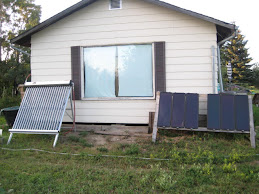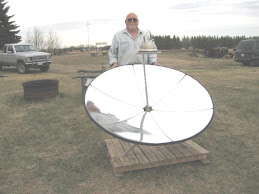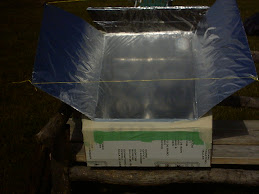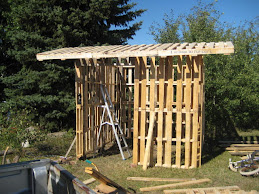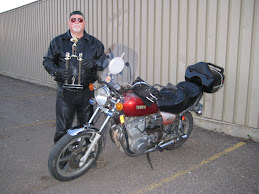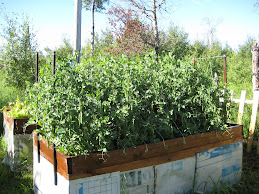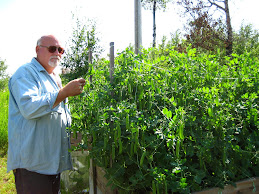
There has been a lot of discussion lately about the 100 mile diet and shop locally. That to be environmentally responsible one has to buy there food from the surrounding area and save all that fuel and greenhouse gases from trucking produce thousands of miles from the grower to your stores shelves.
As usual nothing is as simple as it sounds. I recently listened to an analyst talking about the fact that over half the greenhouse gases and fuel used was not the usage of the trucks, planes or ships that were used to transport the products, but, rather it was the 5 and 6 miles traveled from home to the supermarket that used the fuel and added so much to the greenhouse gases.
Additionally the land use issues were in favor of growing products where it was best suited. For example wheat grows best in the “wheat belt” area of the prairies in Canada and the USA, were it would take 2 or 3 or 4 or more times as much land to grow the same amount in other places. Things like lettuce and strawberries ect take a fraction of the land in California to grow as they would in places like Vermont or Colorado.
All in all a very good argument for going ahead and buying without guilt the things that have been shipped halfway across the nation. BUT only if you peddle your bike to the store and leave the car at home (not going to happen here, this morning it was -27C or 14 below Zero F) and NO WAY am I not taking the car to the store.
Like I said nothing is ever simple.
However the buy local people do have a point. Take that package of hamburger that is sitting in my freezer. The cattlemen here in our area ship cattle just over a 600 KM (400 miles) to the slaughter house, from there it is shipped another 1000KM to the distribution center and warehouse, then shipped another 1000KM back to the store that is less then 20 miles
 from the cattle operation where the cow started its journey. I agree that in that case far better to get to know the rancher and the local meat cutter and enjoy that fine hamburger or steak. BUT like I said nothing is simple. If we all did that, then the truck driver would be out of a job, and hundreds of people at the packing plant would be out of a job, and 100s in the warehouse would be looking for a new job and the clerk at the store would get a lot less hours.
from the cattle operation where the cow started its journey. I agree that in that case far better to get to know the rancher and the local meat cutter and enjoy that fine hamburger or steak. BUT like I said nothing is simple. If we all did that, then the truck driver would be out of a job, and hundreds of people at the packing plant would be out of a job, and 100s in the warehouse would be looking for a new job and the clerk at the store would get a lot less hours.The point I want to make is less about how far things are shipped (and something only grow in the tropics or in the middle of the ocean, some things have to be shipped if we are going to enjoy them at all) but that we know where they come from, how they are grown and under what conditions are they being grown. This would be the spot where the Free Trade coffee people, and the Rain Forest Alliance people would put an Ad.
I strongly suggest that yes you support your local Farmers Market where you can buy the best locally grown produce right from the people that grew it, in season, but in January in Canada the lettuce comes from California or Texas as the gardens here are under a couple of feet of snow. Just like the Wheat used in that dish of pasta likely came from my neighbors field.
It is the lack of awareness of where produces come from and how they get to market that is my issue. When you hear people talking about milk, bread and hamburger like they are produced in a factory and not on a farm, that just shows how far removed people are from the reality of life. When it is traumatic for a child to learn that their running shoes are the hide of a cow. When there is no connection between where it was produced or grown and the end user, we have gotten to far removed.
Cheap-O Economics.




